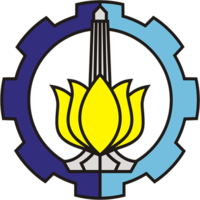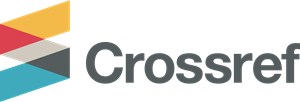COLLECTIVE LEARNING IN A LEARNING ORGANIZATION: GROWING TEAM LEARNING CULTURE TO SURVIVE AND DEVELOP
Abstract
A learning organization has a deep culture of learning. It is constantly
encourage its member to learn. This learning activity is not only for adapting to
the rapid changing of its internal and external environment, but also for
growing. The effort of a learning organization to create a conducive learning
climate can be indicated by training its members. Working towards a learning
organization has both its strengths and drawbacks. The strengths are it can
improve the organization performance and organization survival. However,
learning too rapid can lead to learning stress. Moreover it can lead to harsh
internal competition.
Keywords
Full Text:
PDFReferences
Abbott, J., & Dahmus, S. 1992. Assessing the appropriateness of self-managed
learning. The Journal of Management Development, 11 (1), 50-60.
Appelbaum, S., H. & Gallagher, J. 2000. The competitive advantage of
organizational learning. Journal of Workplace Learning, 12 (2), 40-54.
Cacioppe, R., Warren-Langford, P., & Bell, L. 1990. Trends in human resource
development and training. Asia Pacific HRM, 28(2), 55-72.
Dessler, G., Griffiths, J., & Lloyd-walker, B. 2004. Human Resource
Management (2nd ed.). NSW: Pearson Education Australia.
Hacooun et. al. 1998. Training in the 21st century: Some lessons from the last one.
Canadian Psychology, 39 (1/2), 33.
Heyes, J., & Stuart, M. 1996. Does Training Matter? Employee experiences and
attitudes. Human Resource Management Journal, 6 (3), 7-21.
Hosie, P., J. 1992. Human resource managers and training: a peek into the future.
Asia Pacific Journal of Human Resources, 30 (3), 49-66.
Isaacs, W., N. 1993. Taking flight: Dialogue, collective thinking, and
organizational learning. Organizational Dynamics, Autumn, 24-39.
Kochan, T., A. & barocci, T., A. 1985. Human resource management and
industrial relations. Text, readings, and cases. USA: Scott, Foresman and
Company.
Kofman, F. & Senge P., M. 1993. Communities of commitment: The heart of
learning organizations. Organizational Dynamics, Autumn, 5-12.
Kim, D., H. (1993). The link between individual and organizational learning.
Sloan Management Review, Fall, 37-50.
Lehesvirta, T. 2004. Learning process in a work organization: From individual to
collective and/ or vice versa. Journal of Workplace Learning, 16 (1/2), 92-
Levitt, B. & March, J., G. 1988. Organizational learning. Annual Reviews
Sociology, 14, 319-340.
Lynton, R., P. & Pareek, U. 1967. Training for development. Illionis: The Dorsey
Press.
jsh Jurnal Sosial Humaniora, Vol 5 No. 2, November 2012
– Collective Learning in A Learning Organization
March, J., G. & Olsen, J., P. 1975. The uncertainty of the past: Organizational
learning under ambiguity. European Journal of Political Research, 3, 147-
McGill, M., E. & Slocum, J., W. 1993. Unlearning the organization.
Organizational Dynamics, Autumn, 67-79.
McHugh & Marie 1993. Stress at work: Do managers really count the costs?
Employee Relations, 15 (1), 18-32.
Mc.Hugh et. al. 1993. Managing work stress: A key issue for all organization
members. Employee Counselling Today, 5 (1), 16-21.
Nankervis, A., Compton, R., & Baird, M. 2005. Human resource management.
Strategies and processes (5th ed.). Ohio: South-Western Publishing, Co.
Reagans, R & Argote, L. & Brooks, D. 2005. Individual experience and
experience working together: Predicting learning rate from knowing who
knows what and knowing how to work together. Management Science, 51 (6),
-881.
Reardon, R., F. 2004. Informal learning after organizational change. Journal of
Workplace Learning, 16 (7/8), 385-395.
Senge, P., M. 2006. The Fifth Discipline. The Art & Practice of The Learning
Organisation. Sydney: Random House Australia (Pty) Limited.
Steiner, L. 1998. Organizational dilemma as barriers to learning. The Learning
Organization, 5 (4), 193.
Schein, E., H. 1993. On dialogue, culture and organizational learning.
Organizational Dynamics, Autumn, 40-51.
DOI: http://dx.doi.org/10.12962%2Fj24433527.v5i2.616
Refbacks
- There are currently no refbacks.
This work is licensed under a Creative Commons Attribution 4.0 International License.





